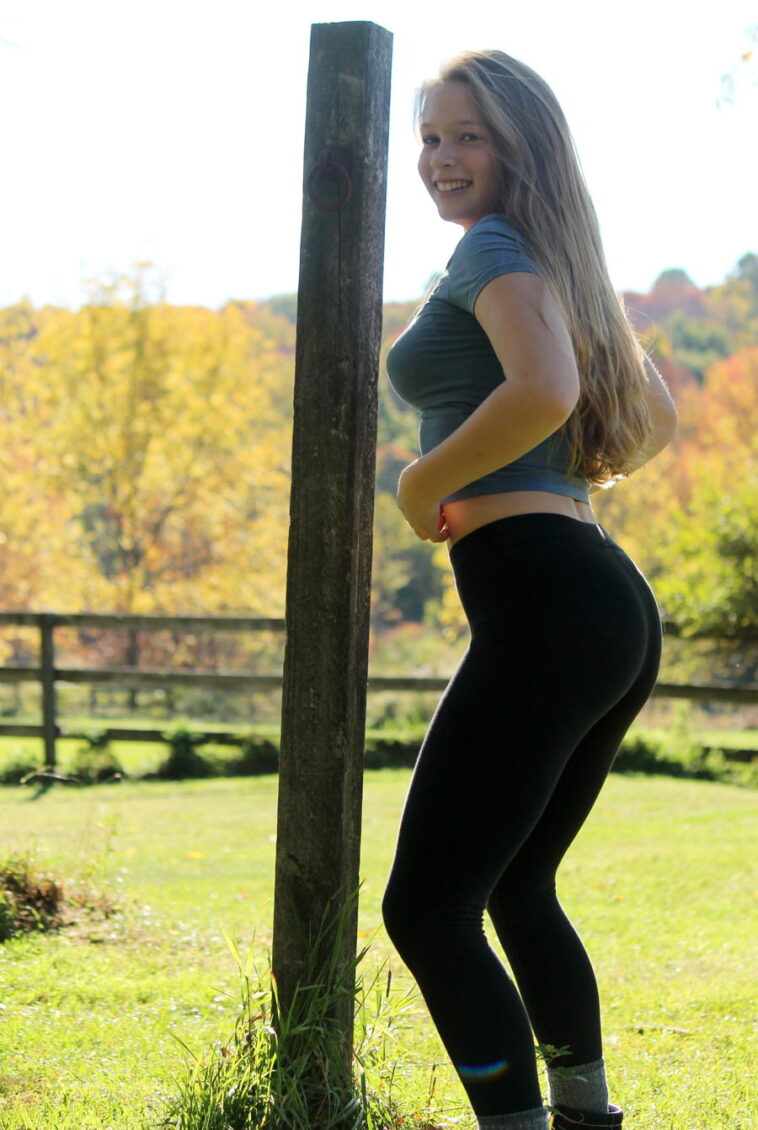Understanding The Complex Dynamics Of Boobs And Teens: A Comprehensive Guide
**Let’s face it, folks. The topic of boobs and teens isn’t just some casual conversation starter. It’s a deeply layered subject that touches on body image, self-esteem, societal norms, and even mental health. As much as we’d love to sweep it under the rug, ignoring this conversation only makes things worse. So, let’s dive right in and unpack the elephant in the room. Why? Because understanding this dynamic can empower teens to navigate their journey with confidence, and it can help parents, educators, and guardians foster a healthier dialogue.**
When we talk about boobs and teens, we’re not just discussing anatomy. We’re talking about how young people perceive their bodies, the messages they receive from media, peers, and culture, and the emotional toll it can take. This is more than a biology lesson; it’s a psychological and social phenomenon. And trust me, it’s way more important than most people realize.
Here’s the kicker: this isn’t just a teenage thing. The way we talk about boobs and teens today shapes how society views bodies tomorrow. Whether we’re addressing unrealistic beauty standards or helping teens feel comfortable in their own skin, every conversation matters. Let’s break it down and make sense of it all.
Read also:Exploring The Life And Marriage Of Khamzat Chimaev
Why Boobs Matter in Teen Years
Let’s start with the basics. During the teen years, boobs aren’t just physical changes—they’re emotional and psychological milestones. For many teens, developing breasts is one of the first signs of puberty, and it can bring a whirlwind of emotions. Some might feel excited, while others might feel self-conscious or even embarrassed. It’s a rollercoaster, and it’s not always fun.
But here’s the thing: the development of boobs isn’t uniform. Some girls might develop earlier than their peers, while others might take a little longer. This variation is completely normal, but it doesn’t always feel that way when you’re a teenager. The pressure to fit in and look a certain way can be overwhelming. Add to that the constant comparison on social media, and you’ve got a recipe for low self-esteem.
Breaking Down Puberty and Breast Development
Puberty is like a science experiment where your body is the lab. Breast development is one of the key stages, and it usually starts between the ages of 8 and 13. But here’s the kicker: every body is different. Some teens might notice changes earlier, while others might develop later. And that’s okay! It’s important to remember that there’s no “right” time for these changes to happen.
- Stage 1: Breasts start as small buds underneath the nipples.
- Stage 2: The buds grow larger, and the areola might darken.
- Stage 3: Breasts become more rounded and fuller.
- Stage 4: The nipples and areola might protrude slightly.
- Stage 5: Breasts reach their final shape and size.
See? It’s not a one-size-fits-all process. And that’s the beauty of it—every body is unique.
Media Influence and Unrealistic Standards
Now, let’s talk about the elephant in the room: media. Social media platforms, magazines, and even movies have a significant impact on how teens perceive their bodies. We’re bombarded with images of “perfect” bodies, and it’s easy to fall into the trap of comparing ourselves to these unrealistic standards.
But here’s the truth: those pictures aren’t always real. Filters, Photoshop, and clever angles can create an illusion of perfection that doesn’t exist in real life. And when teens constantly compare themselves to these images, it can lead to feelings of inadequacy and low self-esteem.
Read also:Joel Embiid Needs Another Knee Surgery In Latest 76ers Crusher
How to Combat Negative Media Influence
Fighting back against negative media influence isn’t easy, but it’s definitely possible. Here are a few tips:
- Encourage teens to follow body-positive influencers who promote self-love and acceptance.
- Teach them to critically evaluate the images they see online. Are they real? Or are they heavily edited?
- Have open conversations about body image and the importance of embracing individuality.
By fostering a positive environment, we can help teens develop a healthier relationship with their bodies.
Self-Esteem and Confidence Building
Self-esteem plays a crucial role in how teens perceive themselves and their bodies. If a teen feels confident in their skin, they’re more likely to handle challenges and setbacks with grace. But if their self-esteem is low, it can lead to anxiety, depression, and even eating disorders.
So, how do we build self-esteem in teens? It starts with small, consistent actions. Praising their efforts, encouraging them to pursue their passions, and reminding them that their worth isn’t tied to their appearance can make a world of difference.
Practical Tips for Boosting Confidence
Here are a few practical ways to boost a teen’s confidence:
- Encourage them to express themselves through hobbies, art, or sports.
- Help them set realistic goals and celebrate their achievements, no matter how small.
- Teach them the power of positive self-talk and affirmations.
Remember, confidence isn’t built overnight. It’s a journey, and every step counts.
Peer Pressure and Body Image
Peer pressure is a powerful force during the teen years. Whether it’s comments about their appearance or comparisons to others, it can take a toll on a teen’s body image. The fear of not fitting in can lead to unhealthy habits and behaviors.
But here’s the good news: peer pressure isn’t always negative. When surrounded by supportive friends, teens can build each other up and create a positive environment. Encouraging teens to surround themselves with people who uplift them can make a huge difference.
How Parents Can Help
Parents play a vital role in helping teens navigate peer pressure. Here’s how they can make a difference:
- Open the lines of communication. Let teens know they can talk to you about anything without judgment.
- Model healthy body image behaviors. If you’re constantly criticizing your own body, your teen might pick up on those habits.
- Teach them the importance of choosing friends who value them for who they are, not just how they look.
By being a supportive presence, parents can help teens build resilience against peer pressure.
Health Concerns and Breast Care
While we’re on the topic of boobs and teens, it’s important to address health concerns. Breast care is an essential part of puberty, and educating teens about it can empower them to take charge of their health.
Teens should be taught about the importance of self-examinations and how to spot any unusual changes. Early detection of issues like lumps or swelling can make a significant difference in treatment outcomes.
Practical Steps for Breast Care
Here are a few practical steps teens can take for breast care:
- Learn how to perform self-examinations and make it a regular habit.
- Wear properly fitted bras that provide support and comfort.
- Stay informed about breast health and don’t hesitate to ask questions.
Knowledge is power, and the more teens know about breast care, the better equipped they’ll be to handle any concerns.
Addressing Common Myths
There are plenty of myths surrounding boobs and teens, and it’s time to set the record straight. For example, some people believe that wearing bras can cause breast cancer. Spoiler alert: it’s not true. Others think that small boobs mean less sensation, which is also a myth. These misconceptions can lead to unnecessary worry and confusion.
Dispelling these myths is crucial for promoting accurate information and reducing anxiety. Encourage teens to ask questions and seek reliable sources for answers.
Myth vs. Reality
Here’s a quick breakdown of some common myths:
- Myth: Bras cause breast cancer. Reality: There’s no scientific evidence to support this claim.
- Myth: Small boobs are less sensitive. Reality: Sensitivity varies from person to person, regardless of size.
- Myth: Breast size determines self-worth. Reality: Your worth isn’t tied to your body size or shape.
Education is key to separating fact from fiction.
Creating a Safe Space for Conversations
Talking about boobs and teens might feel awkward at first, but creating a safe space for these conversations is essential. When teens feel comfortable discussing their bodies, they’re more likely to seek help when needed.
Parents, educators, and guardians can play a pivotal role in fostering open communication. By listening without judgment and providing accurate information, they can help teens navigate this complex topic with confidence.
Building Trust and Open Dialogue
Here’s how to build trust and encourage open dialogue:
- Be approachable and willing to listen without interruption.
- Respect their boundaries and let them share at their own pace.
- Provide resources and information to help them make informed decisions.
When teens feel supported, they’re more likely to open up and seek guidance.
The Role of Education in Body Positivity
Education is a powerful tool for promoting body positivity. By teaching teens about the diversity of body shapes and sizes, we can help them appreciate their uniqueness. Schools and communities can play a crucial role in this by incorporating body positivity into their curriculums and programs.
Encouraging teens to embrace their individuality and celebrate diversity can lead to a more inclusive and accepting society. And that’s something we can all get behind.
Implementing Body Positivity in Schools
Here are a few ways schools can implement body positivity:
- Introduce workshops and seminars on self-esteem and body image.
- Create safe spaces for teens to discuss their concerns and share experiences.
- Partner with organizations that focus on promoting body positivity and mental health.
By taking proactive steps, schools can help teens build a positive relationship with their bodies.
Conclusion
In conclusion, the topic of boobs and teens is more than just a biological process—it’s a psychological, social, and emotional journey. By understanding the complexities of this dynamic, we can empower teens to navigate their development with confidence and self-assurance.
So, what can you do? Start by having open, honest conversations with the teens in your life. Encourage them to embrace their uniqueness and celebrate their individuality. And most importantly, remind them that their worth isn’t tied to their appearance.
Now, it’s your turn. Share this article with someone who might benefit from it. Leave a comment below and let’s continue the conversation. Together, we can create a world where every teen feels comfortable in their own skin.
Table of Contents
- Why Boobs Matter in Teen Years
- Media Influence and Unrealistic Standards
- Self-Esteem and Confidence Building
- Peer Pressure and Body Image
- Health Concerns and Breast Care
- Addressing Common Myths
- Creating a Safe Space for Conversations
- The Role of Education in Body Positivity
- Conclusion


